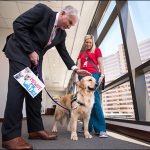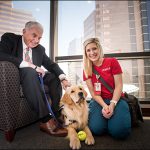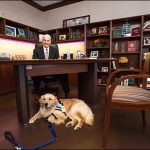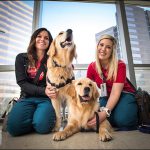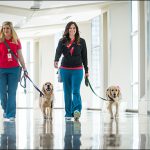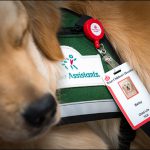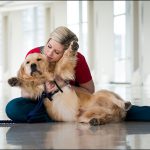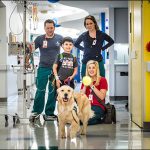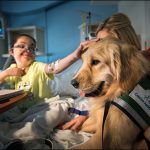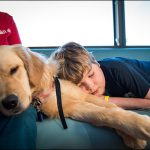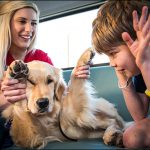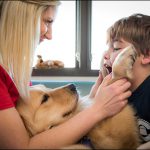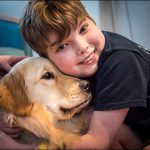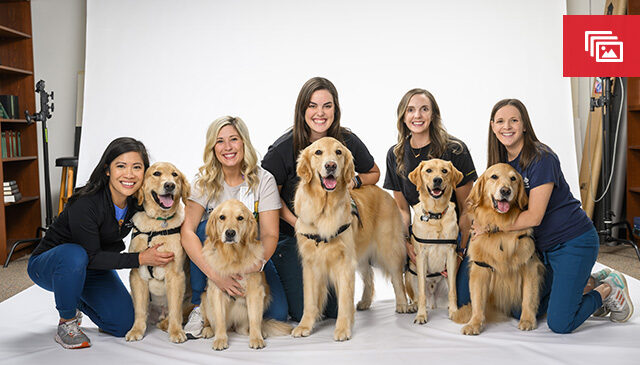
Many of us would love to have a dog for a co-worker, especially one of our highly trained, well-behaved facility dogs at Texas Children’s. Our animal assisted therapy coordinators will tell you it’s a dream job and they wouldn’t trade it for the world, but it’s also a lot of hard work. Being a facility dog handler is a huge commitment.
How they got started
Facility dog handlers at Texas Children’s start as child life specialists, and many of them gain years of experience in the field before they get involved in the Pawsitive Play program. There’s a two-year minimum requirement as a child life specialist before you can apply for the program. For anyone interested in these roles, it’s recommended to get plenty of experience first and understand your own personal goals.
“I would encourage anyone interested in being a handler to be confident in their child life and people skills before applying, because there are a lot of added responsibilities in this role,” said Hanna Kuhn who works with Pluto in the outpatient clinics of Mark Wallace Tower.
Shelby Bonnet, who works with Pinto, recommends doing research, making connections with current handlers to ask questions, and shadowing them to gain an understanding of everything involved in this role. While it is a very rewarding job, there’s a lot of extra work involved, as well as added financial and physical responsibilities.
Working as a team
Treating patients is a team effort for the facility dogs and handlers. The dogs add to the work child life specialists already do, so they provide enhanced care for patients during their visits.
Angus, Bailey, Cohen, Pinto and Pluto are the facility dogs in our Pawsitive Play program. They are trained to provide goal-oriented therapeutic interventions and emotional support for hospitalized children as well as their families and our staff, and they are full-time employees of the hospital. Texas Children’s also has a group of volunteer therapy dogs who visit patients every other week and are trained to be friendly and provide comfort to all types of people through physical and emotional affection.
Being with a dog all the time in a hospital full of people also requires the handler to be alert and aware of their surroundings at all times. “We are constantly making assessments about the environments we are in, checking for anything that might put the dogs in a stressful situation. We need to check the dogs’ emotions and needs to make sure we can advocate for them, while also scanning the people around us to make sure no one is afraid of them. When you have a dog with you every day, there’s always something to be thinking about,” said Meg Gustafson who works with Angus at West Campus.
Where the day takes them
Each day is different for the specialists as it depends on the patients admitted, events happening or consults from clinical staff. Typically, the day starts with a review of clinic schedules and consults, morning meetings and developing plans for patient visits.
Before they visit patients, the dogs are groomed (brushing/ear cleaning) and taken out for a potty break. After seeing 2-3 patients, it’s break time for the dogs where they can relax, play and get ready for the next set of patients. The specialists will chart and perform administrative tasks before seeing more patients.
“One of the things we do as facility dog handlers on a daily basis is assess the needs of our patients and prioritize the order and type of interventions we provide. This allows us to maximize patient care while also protecting the emotional state of our facility dog while at work,” said Adair Winget who works with Bailey. “Our goal is to balance the medical based goals of our patients while also supporting their emotional needs. When we provide patient care interventions, we are mindful of the environments we expose our facility dogs to, which allows us to manage their stress and minimize their burn out.”
Emotional roller coaster
The handlers all agree the most rewarding part of the job is seeing the impact they make every day with their dogs. “Witnessing the absolute joy he brings to everyone he meets” and “giving patients a piece of normal so they can forget for just a moment they’re inside a hospital” are some of the biggest rewards.
Unfortunately, one of the biggest responsibilities for the handlers and dogs is providing comfort during tough conversations, procedures and sometimes end of life support.
Meg commented, “It’s a privilege to be trusted and asked to be present in those times, and we are always happy to help, but those situations are hard and weigh heavy on the heart.”
When asked what her proudest moment is at Texas Children’s, Shelby shared, “Every day is a proud moment… we get to serve the patients and families here and make a difference in some of the most painful and happiest days of their lives. Each patient and family here are on their own journey, and the fact we’re able to be a part of it is absolutely amazing.”
To pet or not to pet
If you run into one of our handlers and their facility dogs, please ask the handler first if it’s okay for you to interact with the dog, understanding they may be wiped out from patient interactions and need to recharge. Any interaction, even just to stop and say hi, takes energy. They need to make sure they conserve the majority of their energy for patients.
“Our facility dogs love to meet and greet everyone in their environments, and they take on the emotions of their surroundings. It’s our job as their handlers to advocate for their needs to maintain their health and well-being,” said CJ Canlas who works with Cohen in The Woodlands. “When it’s time for a break, we create a safe space for them to recharge in the office or advocate for them to walk in the hallway uninterrupted. As much as they love to engage with everyone, they do not recognize the need to preserve endurance for the quality interventions we will be using them in for the rest of the day. If we’re ever unable to stop in the hallway to chat, it’s likely due to prioritizing their energy for patient care.”


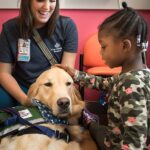
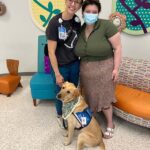
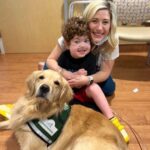
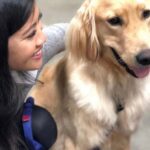

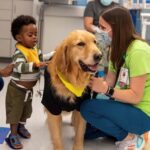
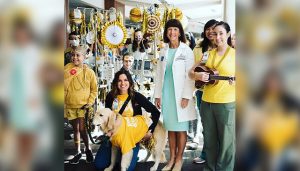
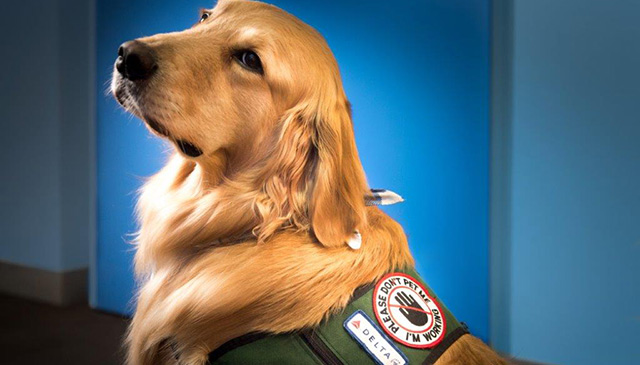
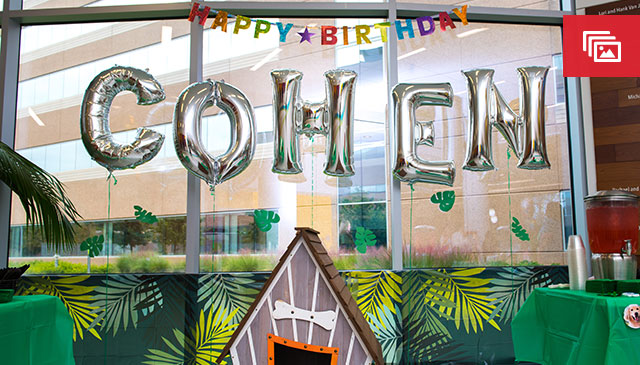







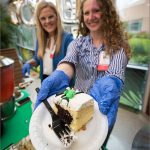

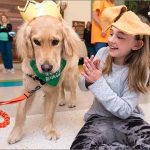
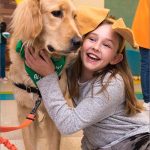
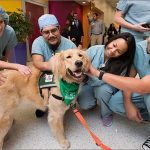
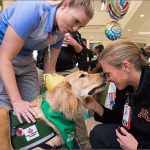


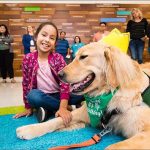
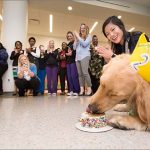
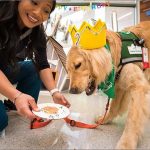
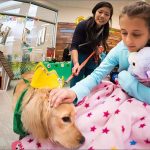
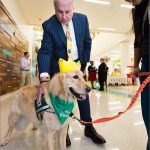

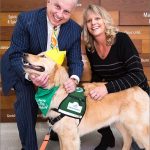

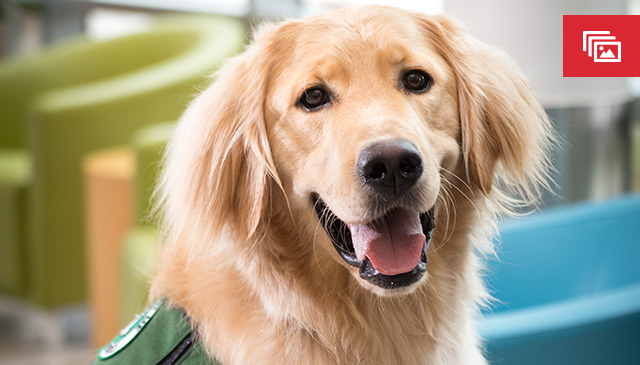
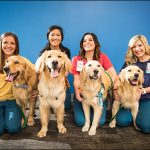
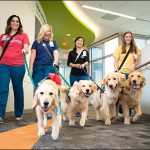

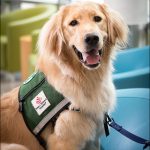
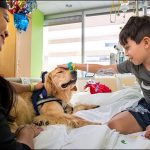
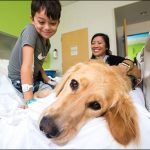
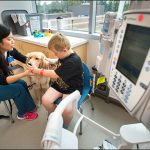
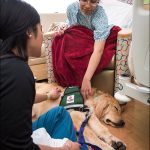
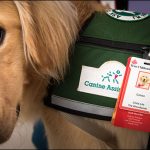
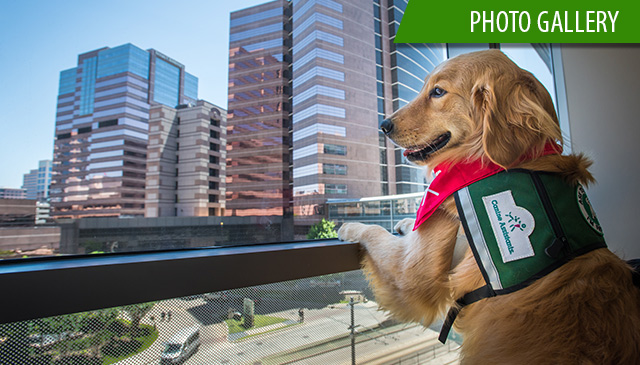 The hospital’s canine crew now has a male pup joining the team. He has officially been added to the roster as a part of Texas Children’s Pawsitive Play Program that uses animal-assisted therapy to enhance the emotional well-being of pediatric patients by reducing their anxiety, perception of pain and fear of hospitalization.
The hospital’s canine crew now has a male pup joining the team. He has officially been added to the roster as a part of Texas Children’s Pawsitive Play Program that uses animal-assisted therapy to enhance the emotional well-being of pediatric patients by reducing their anxiety, perception of pain and fear of hospitalization.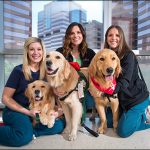

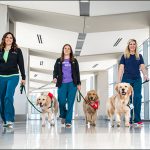
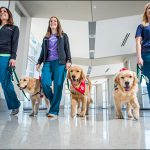
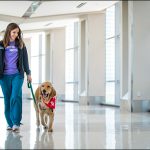
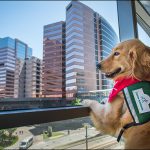
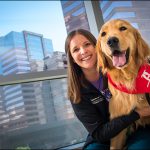
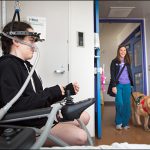
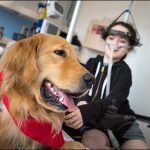
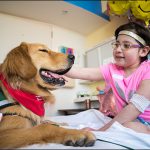
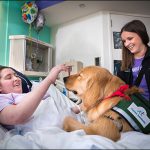
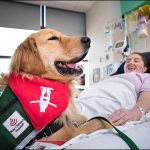
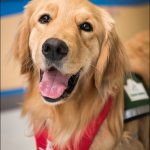
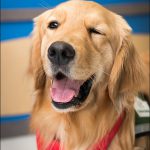
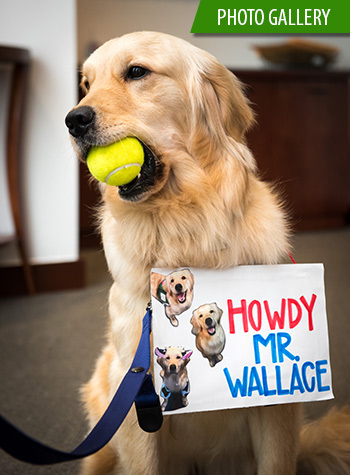 If you have noticed two furry four-legged employees around the hospital, your eyes are not playing tricks on you. At the end of February following Child Life’s explosive gender reveal, Texas Children’s new therapy dog began walking the halls and immediately putting smiles on employees, patients and visitors faces.
If you have noticed two furry four-legged employees around the hospital, your eyes are not playing tricks on you. At the end of February following Child Life’s explosive gender reveal, Texas Children’s new therapy dog began walking the halls and immediately putting smiles on employees, patients and visitors faces.
